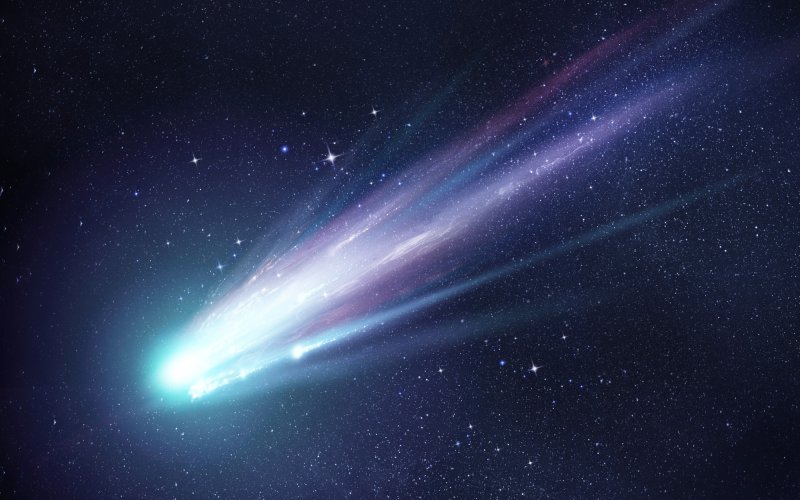Water is a compound of hydrogen and oxygen. A water molecule contains one oxygen atom and two hydrogen atoms bonded to it at an angle of 104.45 degrees. In order for water to appear in the universe, these two basic elements had to be present first.
Hydrogen was created at the very beginning of the universe. As stars formed from it and began to undergo thermonuclear fusion, other elements, including oxygen, formed inside their cores. The primordial stars then exploded as supernovae at the end of their lives, scattering all the elements, including oxygen and hydrogen, into interstellar space.
Oxygen is able to react with hydrogen to form a water molecule at temperatures of several hundred degrees Celsius. In space, however, it’s either freezing cold or the hellfire of stars. Fortunately, there are regions where the temperature is just right for water to form. Massive bursts of matter escape from stars or black holes and plunge into cold gas clouds. As the hot plume moves away from its point of origin, it gradually cools until it reaches the desired temperature of several hundred degrees. Here, hydrogen and oxygen can combine.
Water is a very common substance in space. It is observed by telescopes in interstellar clouds, around star systems and has been detected on the surface of extrasolar planets. The formation of the solar system also produced large quantities of water. This froze on the surface of the dust grains that formed the embryos of the planets. It is now thought that the main source of water on Earth was not so much comets as it was supplied by collisions with water-rich planetesimals during the initial formation of our home planet.
Want to ask something?
Send us an e-mail with the subject “Physics mysteries” to the address:
We can't wait to tackle your interesting questions!





